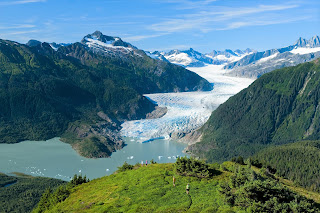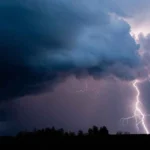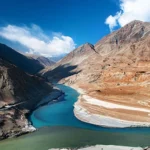
Tongass National Forest, a 17 million acre park in Alaska, occupies at least 80% of the southeast portion of the state. With a predominance of temperate rain forest, it is the biggest of all American national forests. The U.S. established the Tongass National Forest. On September 10, 1907, Theodore Roosevelt was in office. Roosevelt later added to it, and then President Calvin Coolidge did so once more. Environmentalists have been keeping an eye on the Tongass National Forest because of the logging practices and the fact that 60% of it is still accessible for commercial logging, as per plans laid out by the Forest Service.
The Tongass Clan of Tlingit Indians inspired the naming of Tongass National Forest.
Around 75,000 people live in 32 communities within the Tongass National Forest and depend on its resources to survive.
Along 11,000 miles of the coastline, the Tongass National Forest is located. Its forest is the largest temperate rainforest in the world, and it is home to islands, mountains, bays, forests, fjords, glaciers, and significant salmon streams (intact).
Tongass National Forest is home to Juneau, the state capital of Alaska.
The canopy of the Tongass National Forest is made up primarily of hemlock, spruce, and yellow cedar. Ferns and moss cover the ground, and between the canopy and the earth’s surface, evergreens and shrubs proliferate.
Even though Tongass National Forest contains the largest intact temperate rain forest in the world, half of it is made up of rock, wetlands, ice, and water rather than trees.
The Tongass National Forest is home to Alaska’s biggest and most valuable logging trees.
The Tongass National Forest’s old growth trees are protected from logging by the Forest Service in about 25% of the total area, but this only amounts to 241,000 acres.
Black bears, wolves, brown bears, moose, mountain goats, porpoises, humpback whales, killer whales, sea otters, hair seals, and bald eagles are among the animals that can be found in the Tongass National Forest.
More bald eagles are found in Tongass National Forest than any other place on earth.
In addition to halibut and other fish, the Tongass National Forest’s waters are home to all five species of Pacific salmon.
In the Tongass National Forest, Fish Creek, Anan Creek, Park Creek, and Steep Creek are among the frequently visited bear viewing locations.
A common tourist activity is whale watching, which can be done on organized tours on charter boats or on ferries along the Alaska Marine Highway, where staff members help passengers spot wildlife along the way.
Tongass National Forest has a total of 19 areas designated as wilderness areas. In comparison to other national forests, this is the same amount of wilderness areas. These include the Kuiu Wilderness, the Kootznoowoo Wilderness, the Endicott River Wilderness, the Misty Fjords National Monument Wilderness, and others.
Tongass National Forest receives about one million visitors each year. Travelers arrive at the park most frequently on cruise ships.
Renting out remote cabins that require floatplanes, boats, or hiking trails is an option for visitors to the Tongass National Forest.
Tongass National Forest FAQs
Here are some of the most commonly asked questions about the Tongass National Forest, along with detailed answers:
General Information:
- What is the Tongass National Forest?
The Tongass National Forest is the largest national forest in the United States, spanning a massive 16.8 million acres. Located in Southeast Alaska, it’s a temperate rainforest teeming with biodiversity and boasting stunning scenery. Established in 1907, it represents a unique ecosystem crucial to the health of the region.
- How big is the Tongass National Forest?
As mentioned before, the Tongass National Forest is a behemoth at 16.8 million acres. To put that in perspective, it’s roughly twice the size of the state of Maryland.
- What kind of trees grow in the Tongass?
The Tongass is a temperate rainforest, so the dominant tree species are those that thrive in wet, cool conditions. Sitka spruce, western hemlock, western red cedar, and Alaska yellow cedar are the most common varieties. These trees are prized for their strength, beauty, and resistance to rot, making them valuable for lumber.
Conservation and Management:
- Is logging allowed in the Tongass?
Yes, logging is permitted in certain areas of the Tongass National Forest. However, it’s important to understand the scale. Less than 8% of the forest has been impacted by past logging activities, and there are strict regulations in place. Additionally, a significant portion of the Tongass is completely off-limits to logging.
- How much of the Tongass is protected?
Around 39% of the Tongass National Forest is protected from development. This includes designated Wilderness Areas, National Monuments, and Roadless Areas, totaling over 6.6 million acres. There are also areas managed specifically for recreation and wildlife habitat, offering further protection.
- What is the Tongass 77?
The Tongass 77 is a conservation effort focused on protecting the most valuable salmon habitat within the Tongass. It originated from a scientific assessment that identified 77 watersheds crucial for salmon health. The proposal has evolved over time, but the core mission remains safeguarding these vital ecosystems for wild salmon and trout.
Visiting the Tongass:
- What can I do in the Tongass National Forest?
The Tongass National Forest offers a plethora of outdoor activities for visitors. Hiking, kayaking, camping, fishing, and wildlife viewing are some of the most popular options. With its temperate rainforest environment, be prepared for rain and dress accordingly.
- Does it rain a lot in the Tongass?
Yes, the Tongass National Forest receives a significant amount of rainfall annually, averaging around 100 inches in Sitka. This rainfall is what contributes to the lush rainforest ecosystem. However, don’t let the rain deter you; with proper clothing and gear, you can still have a fantastic experience.
- What should I pack for a trip to the Tongass?
Since the Tongass is a temperate rainforest, packing layers is essential. A base layer, fleece or sweater, and a rain jacket are ideal. Comfortable hiking boots or shoes with good traction are important for navigating the trails. Don’t forget to bring water, snacks, insect repellent, and any necessary supplies for your planned activities.









